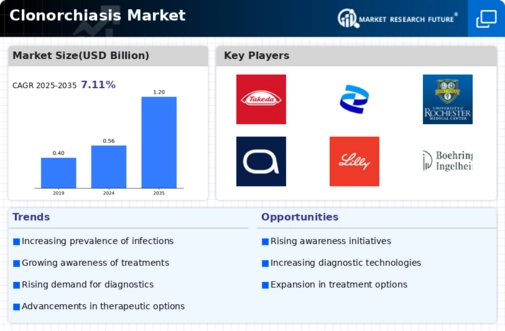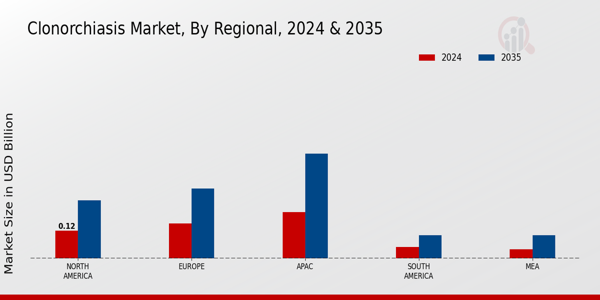The Global Clonorchiasis Market is evolving rapidly due to increasing awareness about parasitic infections and the demand for effective treatment options. Clonorchiasis, caused by the fluke parasite Clonorchis sinensis, is a significant public health concern, particularly in Asia, where the prevalence is notably high. The market is characterized by the presence of several pharmaceutical companies that are continuously striving to innovate and provide effective therapies. Competitive insights indicate a focus on research and development to enhance drug efficacy alongside strategic partnerships to bolster market reach.
The growing collaboration between research institutions and pharmaceutical firms emphasizes the importance of scientific advancements in the fight against Clonorchiasis. Additionally, the expansion of market presence in emerging economies is a key factor contributing to the overall growth and development of the market landscape.Takeda has established itself as a leading player in the Global Clonorchiasis Market through its commitment to innovation and extensive research capabilities. The company's strength lies in its robust product pipeline, focusing on anti-parasitic medications that address Clonorchiasis specifically.
Through strategic partnerships and collaborations with various healthcare organizations, Takeda not only enhances its presence in the market but also contributes to the overall efforts aimed at tackling this infection. Furthermore, the company is known for its strong regulatory expertise, which supports the successful navigation of the complex approval processes required for new therapies. This proactive approach enables Takeda to respond swiftly to the evolving healthcare landscape while maintaining a consistent focus on providing effective solutions for Clonorchiasis.Pfizer is another significant contender in the Global Clonorchiasis Market, known for its extensive portfolio of pharmaceuticals aimed at treating parasitic infections.
The company is recognized for its development and distribution of key products that play a crucial role in addressing Clonorchiasis, leveraging its strong research and development capabilities. Pfizer's robust market presence is bolstered by strategic mergers and acquisitions that have expanded its product offerings and enhanced its competitive edge. By acquiring niche companies with specialized expertise in infectious diseases, Pfizer has been able to strengthen its position within the Clonorchiasis segment specifically. Additionally, the company focuses on global collaboration with governments and non-profit organizations to enhance access to essential medications and improve treatment outcomes for affected populations.
This multi-faceted approach enables Pfizer to maintain a competitive stance in addressing the challenges posed by Clonorchiasis while reinforcing its commitment to global health initiatives.
























Leave a Comment